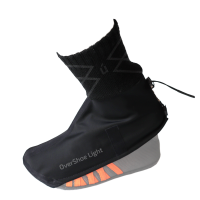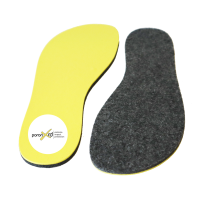Last year I introduced you to the topic of barefoot shoes through the winter with the blog report "Through the winter with minimal shoes", with a short introduction to the material, recommendations, tips and possibilities. This year I would like to deepen the topic and open it up from a different angle... so here follows part two
What is Part Two? What are barefoot shoes exactly? What should the ideal barefoot shoe be like? Feet are very different! What is a winter barefoot shoe? Our experience is that it's all in the mix! How do I find the right one for me?
What is Part Two?
Well, last year I showed ways and possibilities, tried to analyze your needs and understand more precisely what you actually need and explained what can work well. This year I would like to explain the topic of barefoot shoes in winter in a more holistic way, so actually this is part one and last year's blog is part two;-). Because this year you can see again, with 27 degrees at the end of October, the shoe needs of each individual change immediately...
What are barefoot shoes exactly?
These are shoes that protect the foot, but at the same time affect it as little as possible. Barefoot shoes are almost always equipped with a wide toe box and plenty of toe room and a thin and very flexible sole. Barefoot shoes have no heel or heel wedge, the foot is not supported or held with a stable inner sole. The entire shoe has been conceptually designed to have as little impact on your foot as possible.
What should the ideal barefoot shoe be like?
We think it should give you as much barefoot feeling as possible, have a thin sole, fit like a second skin and not pinch or pinch anywhere. The toes must not be squeezed, the width must fit your foot, the barefoot shoes must of course also please and last but not least, they should be affordable and last forever;-). These are usually the demands that you, as a prospective customer, have for barefoot shoes, rightly so! I can already tell you that it's not that easy to fulfill...
Feet are very different!
Just like the barefoot shoe wearers themselves, the feet are incredibly different. One has a high instep, another has very slender feet, the next has a second toe longer than the big toe, the next has a flat arch, another has extremely wide feet or a slender and short heel...
As you can see, finding the right barefoot shoe is not an easy task, especially since the purchase is more and more online these days. Many manufacturers try to address as many foot types as possible with a good mediocrity and thus also find a good fit. But we think it depends on other things too. For example, good advice, where does the shoe come from, how is it produced, how long will the shoe last, can I customize my future shoe, what do I have to pay for and, most importantly, how do I like it and how does it fit on my foot.
What is a winter barefoot shoe?
Anyone who thinks of barefoot shoes in general often finds it difficult to imagine that you can get through the winter in barefoot shoes. Because everyone who has already started with the topic knows that barefoot shoes usually have very thin soles, a wide toe box for a lot of space, no heel or any elevations and also no footbeds or the like. Thin soles and a wide toe box, that doesn't go with winter!? You would think that was maybe 15 years ago...;-).
There are now a number of alternatives and ways of going through the healthy and extremely comfortable topic of walking barefoot in barefoot shoes without getting your feet wet, even in winter. For example with good and warm insoles or water-repellent overshoes. You can certainly get through the winter with higher barefoot boots, but unfortunately the soles are usually too thick and the good barefoot feeling is lost.
Too thin soles, on the other hand, have the problem that you quickly get cold feet, especially from below. Put yourself in any summer barefoot shoes, no matter what brand, for an hour at the Christmas market, e.g. drinking mulled wine, then you will understand what I mean ;-). In this case, many manufacturers make compromises and usually try to make the soles a little thicker, line them a little on the inside, or put on a stiff profile sole right away. The disadvantage is that you lose the complete barefoot feeling and flexibility, you also don't create any movement warmth and you get cold feet in the long term...
Our experience is that it's all in the mix!
This way you are the most flexible and prepared for any weather. Thin soles and warm insoles, for example, work very well, even if you stand for a long time. You create the important movement warmth, but don't lose the good barefoot feeling. Well waxed leather barefoot shoes or impregnated uppers in combination with warm socks and a pair of OverShoe Light or Pro for quick protection against moisture also work very well. Barefoot winter boots that are lined and have removable insoles also work well. Just make sure the soles aren't too thick.
How do I find the right one for me?
Let yourself drift through the wild world of barefoot shoes. Tastes are known to be different, as are needs and demands, right now some people are certainly looking at the price, for others it may not be that important...
We think four factors play the biggest role: 1. What do I need right now? 2. What appeals to me and what do I like 3. How does the shoe fit and how is the overall feeling 4. What can and would I like to afford.
The first is usually pretty clear. If you are still looking for advice here, you should definitely take advantage of it, it is worth it and you can clarify final questions and clear up uncertainties. Point two, well, from our manufacturer's point of view, that's the "jackpot" or the golden formula, to appeal to as many customers as possible with the developed barefoot shoe concept and design. From your customer's point of view, get an overview and choose what appeals to you most. It's also worth trying a different brand if the brand you choose doesn't fit well. On the third point, it's worth visiting a shop if you can, if you can't, you should definitely check size charts and video aids, many manufacturers also have templates that you can print out yourself. It's worth it, because it saves unnecessary back and forth, but above all saves money and effort. You can save so much time because you have the right shoes on your feet and can start running...
We think a lot of people are asking themselves right now, do I really need the shoes? Can't I keep going with the old ones? Do I have to buy new ones now?
You may postpone or save a more expensive purchase for later. You don't always have to buy an expensive new shoe, there are also good accessories that you can pull over your barefoot shoes as protection, insert them or refresh your existing old barefoot shoes again. But if you plan to find a good quality barefoot shoe, you should usually pay between 130-250€, for winter barefoot shoes between 160-300€ depending on the manufacturer.
We wish you that you get through the cold season well, especially with comfortable barefoot shoes and warm feet;-)





